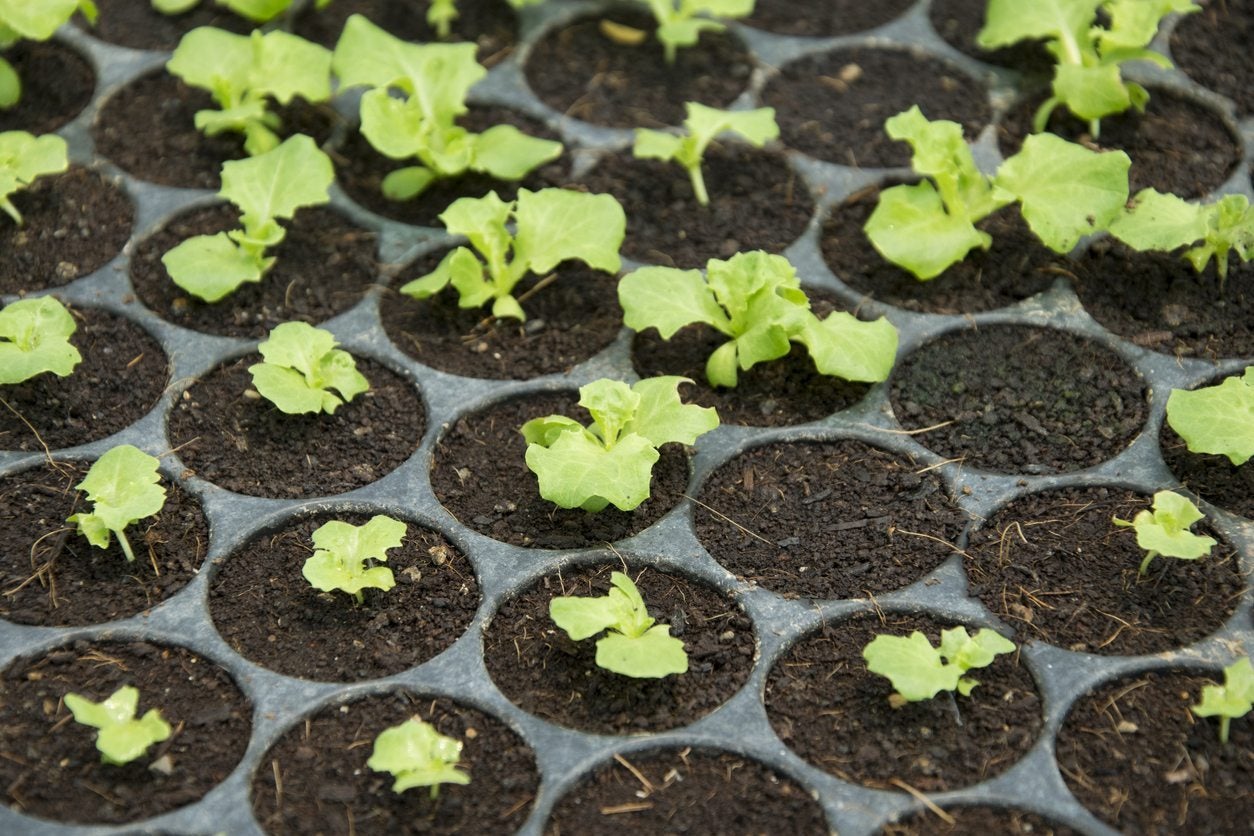My Lettuce Seedlings Are Dying: What Causes Damping Off Of Lettuce

Let’s say you’ve planted lettuce seeds in a seed starter mix. The seedlings germinate and start growing, and you start to get excited about putting them out in your garden. A few days later though, your seedlings fall over and die one by one! This is known as damping off. It is a disease that happens when an unhealthy environment and disease-causing microbes coincide. Damping off can affect almost any type of seedling, including lettuce. However, it’s relatively simple to prevent. Read on to learn what to do about damping off of lettuce.
Symptoms of Lettuce Damping Off
When lettuce seedlings are afflicted by damping off, the stem develops brown areas or white, moldy patches, then weakens and falls over, and the plant dies. You may also see mold growing on the soil surface. Sometimes you won’t see the infection on the stem, but the roots are infected. If you pull up a dead seedling, you’ll see that the roots are black or brown. Seeds can also be infected and killed before they germinate.
Causes of Lettuce Damping Off
Several microbial species can infect seedlings and cause damping off. Rhizoctonia solani, Pythium species, Sclerotinia species, and Thielaviopsis basicola can all cause damping off of lettuce. However, these organisms don’t grow well if you provide your seedlings with healthy growing conditions. Too much moisture is the most common cause of damping off, as it makes seedlings much more susceptible to stem and root infections. Damping off is usually a sign that you are overwatering or that the humidity is too high. The youngest seedlings are the most vulnerable to damping off. If you get your young plants through a couple weeks of healthy growth, they’ll be big enough to resist the microbes that cause the disease.
My Lettuce Seedlings are Dying, What Now
Damping off pathogens are very common in soil. The best way to prevent damping off of lettuce is to provide your seedlings with a growing environment that won’t encourage these microbes. Using soil-free starting mix is another option. Use a well-drained seed starting mix and use small containers (such as a seed starting tray) to ensure the soil won’t stay wet too long. Don’t reuse soil or seed starting mix after a damping off episode. If you’re planting outdoors, avoid planting in soil that is excessively cold and wet. Be sure not to overwater your seedlings. Many seeds need the surface of the soil to stay moist to promote germination. Seedlings don’t need this, though, so as soon as they start to grow, you’ll need to water less often. Water enough to keep the seedlings from wilting, but let the surface dry out slightly before watering. Provide good ventilation to prevent high humidity from developing around your lettuce seedlings. Damping off pathogens thrive in humid environments. Once seedlings germinate, remove any cover that came with your seed starting tray to allow air circulation. Once a seedling is infected, don’t try to save it. Instead, correct any problems in the growing conditions and try again.
Sign up for the Gardening Know How newsletter today and receive a free copy of our e-book "How to Grow Delicious Tomatoes".
Ilana Goldowitz Jimenez is a scientific and agricultural writer with a B.S. in Plant Sciences from Cornell University and a PhD in Chemical Biology and Infectious Disease from Harvard University.